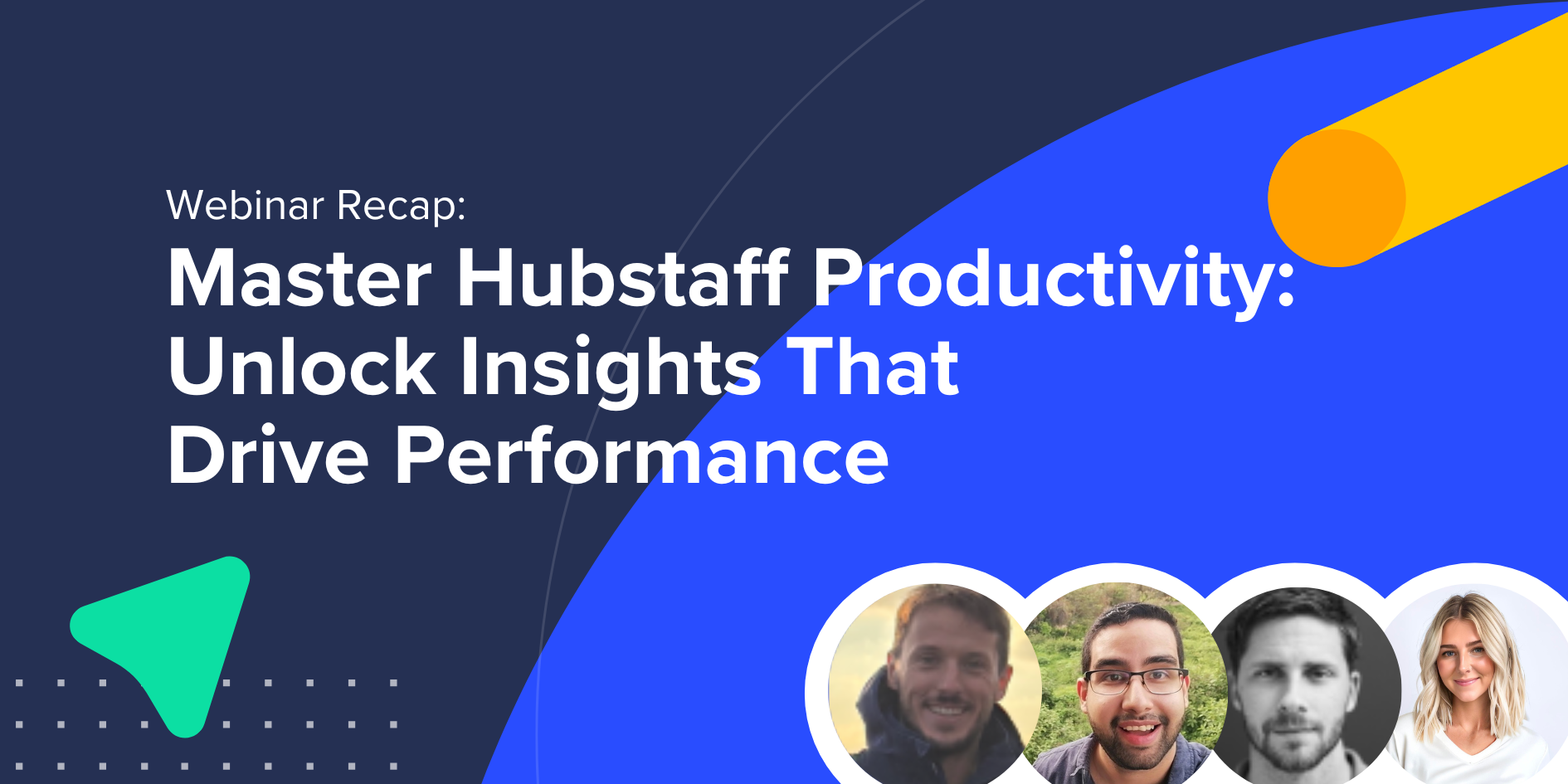In our recent webinar, the product team provided a deep overview of the Hubstaff Insights add-on, a powerful productivity measurement tool designed to give leaders a clearer, more actionable view of how distributed teams work.
The live panel featured a group of expert voices from our product team who have hands-on experience with building and optimizing Insights.
- Cody Rogers (Chief Product Officer)
- Lucas Mocellin (Senior Product Manager)
- Gabriel Ayala (Customer Success Manager)
- Aubrey Nekvinda (Product Marketing Manager)
The session was packed with comprehensive data-driven productivity metrics that can enable better decision-making, coaching, and performance.
Watch the full discussion here: Master Hubstaff Insights: Unlock Insights That Drive Performance
Note: Hubstaff Insights is an add-on feature included with higher-tier plans that helps you manage and optimize distributed teams worldwide.
Below is a comprehensive recap of the webinar, where our Product Manager walked through the key Hubstaff Insights metrics, explaining how each works and the value they bring to both teams and leaders.
Stay in the loop
Subscribe to our blog for the latest remote work insights and productivity tips.
Understanding the key Hubstaff Insights metrics
With Hubstaff Insights, you can access a performance dashboard with metrics tailored to individual team members.
1. Utilization Rate
The first metric you’ll notice is the Utilization Rate, which compares the actual time worked by team members to their expected daily targets (e.g., Worked 7h 12m per day, and the daily target is 8 hours per day).
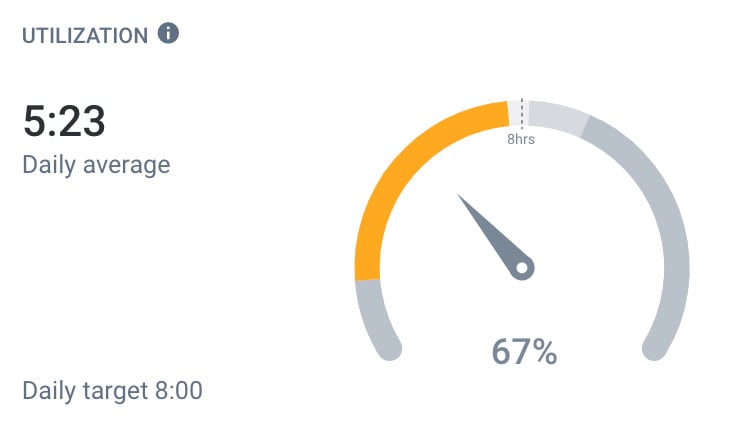
Key benefit: It helps managers quickly assess whether individuals or teams meet expected work volumes and adjust workload accordingly.
2. Work Time Classification
Work Time Classification categorizes the total work time into:
- Core: Value-creating work (e.g., customer calls, project tasks)
- Non-Core: Necessary overhead (e.g., internal communication)
- Unproductive: Distracting or irrelevant activity (e.g., social media).
Note: The “Unproductive” classification may differ depending on job responsibilities
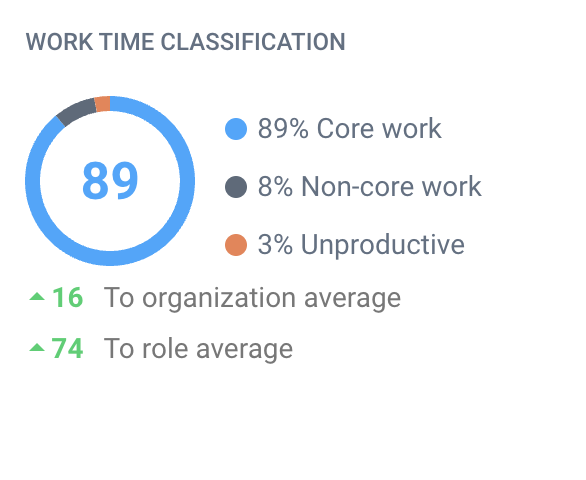
Key benefit: Worktime classifications are customizable based on job role. The activity benchmarks feature allows you to compare them against industry standards. Worktime Classifications offer an overview of work hours spent and help identify inefficiencies or training needs.
3. Focus Time
Focus Time measures time spent on deep, uninterrupted work on a task or project for over 30 minutes. This can be customized based on the roles. For instance, a writer may have a different focus time benchmark than someone in a customer success role.
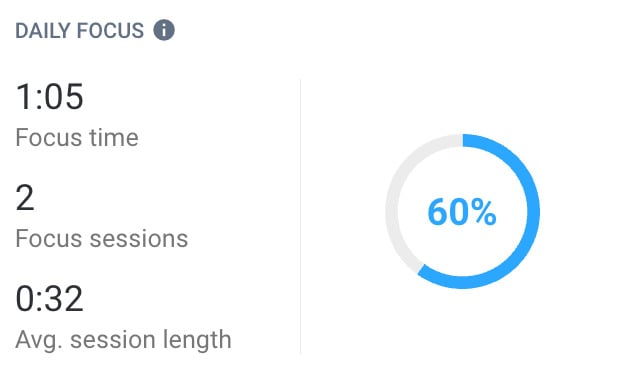
Key benefit: Encourages better time management and prioritization, especially in roles where deep work is essential.
4. Activity rate
Activity rate reflects how frequently a user interacts with their mouse or keyboard during a time tracking period.
Key benefit: It indicates active work time, which helps detect disengagement, multitasking overload, or potential burnout.
5. Unusual Activity Detection
Unusual Activity Detection identifies work patterns that deviate from Hubstaff’s anonymized usage benchmarks (e.g., excessively high or low activity periods). However, there are exceptions to this. For example, someone might cross an activity threshold during peak productive hours.
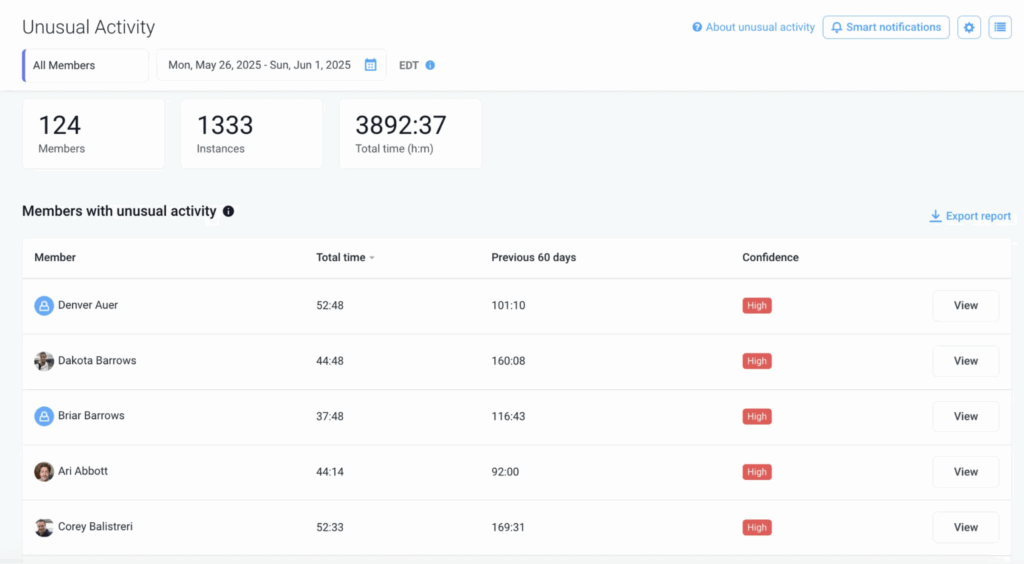
Key benefit: Enables early detection of anomalies such as burnout, potential time mislogging, or time theft, activity simulation — empowering managers to pinpoint potential inefficiencies on time.
6. Smart Notifications
Smart notifications are automated alerts set to trigger based on customizable thresholds (e.g., low core work, unproductive time, underutilization).
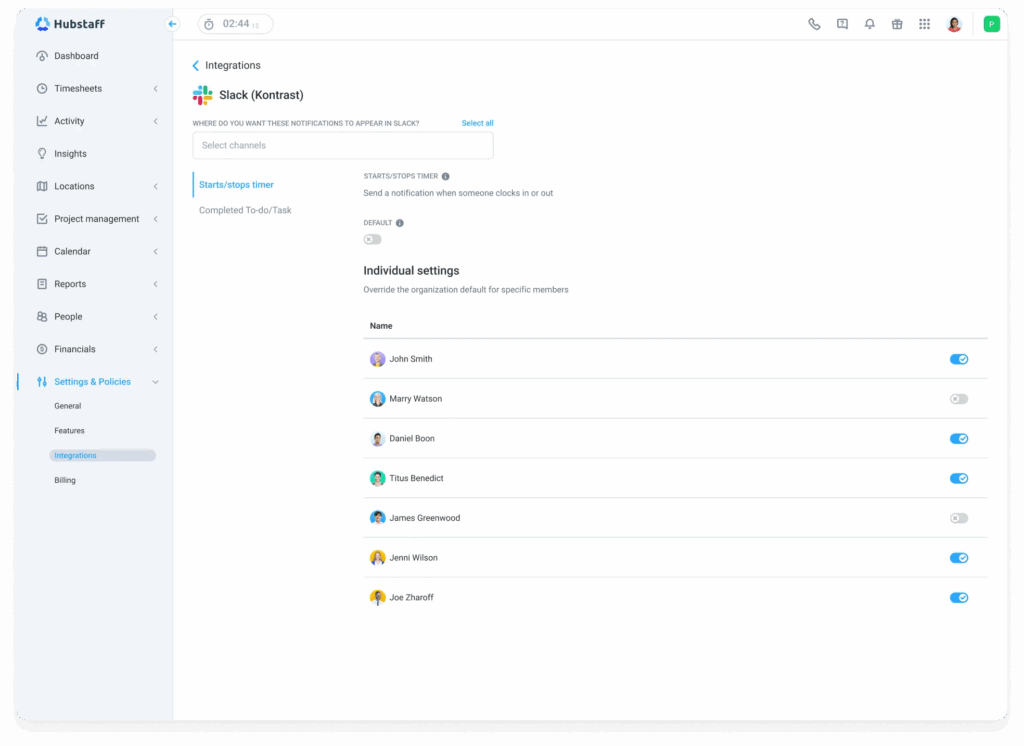
Key benefit: These alerts help you track team dynamics in real time and flag signs of overwork, underperformance, and unusual behavior so you can take timely action.
Customer spotlight: My Biz Niche
The webinar also featured a real-world success story from My Biz Niche, a digital agency that implemented Hubstaff Insights to streamline its global operations.
With Insights, they were able to:
- Reduce manual admin work by 10–15 hours/week.
- Automate time-off approvals and productivity monitoring.
- Use smart notifications to detect and prevent employee burnout.
- Improve overall team balance, enhancing client satisfaction.
Lauren Kleser, their operations manager, highlighted how Insights empowered managers to shift from spreadsheet-heavy processes to real-time, actionable insights.
Conclusion: Turning data into action with Hubstaff Insights
Hubstaff Insights bridges the gap between time tracking and productivity data available to view in real time. With customizable dashboards, benchmarks, and automation, it empowers leaders to:
- Make informed, data-driven decisions
- Improve employee coaching and support
- Prevent overwork and burnout
- Optimize team workflows in real time
Whether you manage an in-office, hybrid, or globally distributed team, Hubstaff Insights helps you go beyond raw data to unpack actionable productivity improvements every day.
Our internal teams use Hubstaff Insights regularly to improve their self-efficacy, performance, and productivity. Leaders use the data to identify high performers, allocate resources more effectively, and improve the entire organizational workflow.
Most popular
6 Signs Your Employees Can Tell They’re Being Monitored at Work
Noticing unfamiliar software, restricted access, or slower internet? These might be signs you are being monitored at work. I...
The Complete Guide to User Activity Monitoring: Tools, Benefits, and Ethics
Have you ever noticed how the conversation around monitoring tends to swing between “track everything” and “trust everyone b...
How to Choose the Right Employee Attendance Tracker for Your Team
An employee attendance tracker records time spent on the job, absences, late or abandoned shifts, and other valuable information....
How Agencies Can Leverage AI & Time Tracking to Increase Profits
Why AI Is Powering Agencies, But It’s Missing From the Data Agencies are adopting AI faster than ever – using it for research,...
